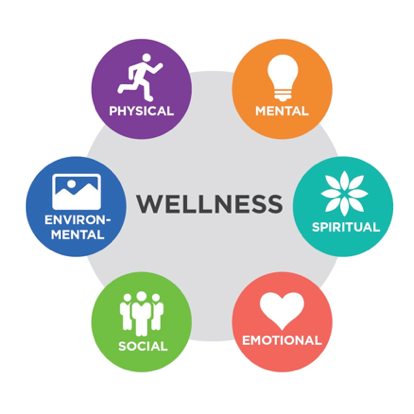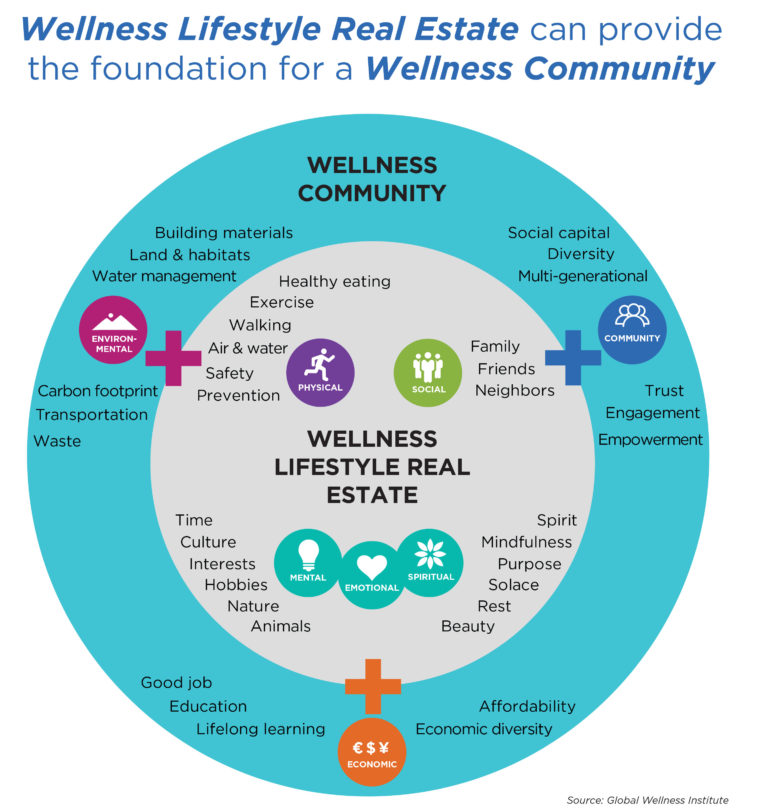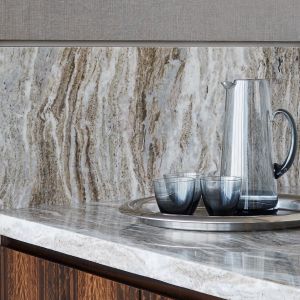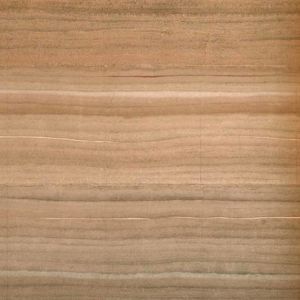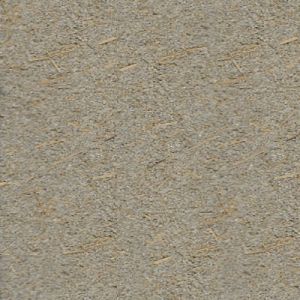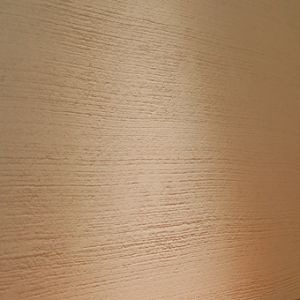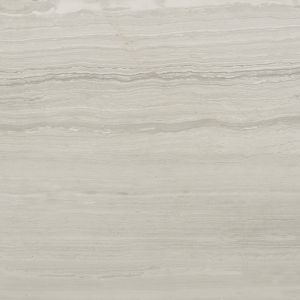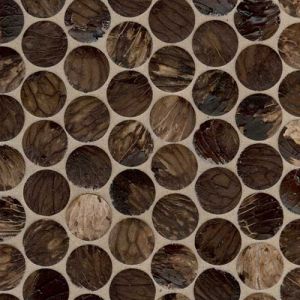Designing homes with wellness in mind is center to our mission at Gast Home. Good design goes beyond aesthetics; it’s about creating an environment that supports physical health, mental balance, emotional well-being, and even social connection. It bridges architecture, psychology, ecology, and history. Throughout history, humans have designed homes not only for shelter, but also to live in harmony with nature’s rhythms. Across cultures and time periods, homes were shaped by local climate, materials, and topography.
Examples:
- Desert homes: Thick adobe walls and small windows in Southwestern and Middle Eastern architecture stabilized temperature, mimicking caves.
- Tropical homes: Elevated wooden houses with wide eaves promoted cross-ventilation and prevented humidity buildup
- Northern Europe: Steeply pitched roofs shed snow; hearth centered layouts radiated heat inward.
- Greek Islands: Whitewashed walls reflected sunlight; narrow streets created shaded microclimates.
Sun and wind are obvious forces that directly relate to our comfort — sunlight for warmth and life, breezes for cooling, and shade for relief.
- Roman atrium houses had central courtyards brought light and air into the core
- Japanese minka used sliding panels and verandas to adjust light and airflow through the seasons.
- Greek oikoi and Vitruvian principles: Facades faced South for winter sun and North for summer shade.
- Feng Shui: Orientation balanced energy flow (“qi”) with cardinal directions, topography, and water.
Beyond general comfort, the design strategies that emerged inherently supported wellness, happiness, and health by connecting people to nature and its forces. They promoted a deep sense of place and belonging to the natural landscape, as well as a strong sensory connection to the seasons, daylight, and breezes. Exposure to natural light improves circadian rhythm and mood. Air movement promotes vitality and reduces indoor pollutants. Sense of time and natural rhythm fosters psychological balance
Building with this connection to natural cycles can also create a sense of community. Hearth-centered homes offer a locus for the family. Courtyards are places for cooking and storytelling. They strengthen social bonds and emotional wellbeing, and when designed right can create a spiritual connection.
Along the way, our building methods strayed from what is natural, and removed us from our connection to the earth. It’s a key reason we focus on nature and our connection to it when designing homes.
- Designing around Natural Light
- Prioritizing Air Quality
- Bringing Nature Indoors (Biophilic Design)
- Designing for Energy Flow
- Sensory Wellness
- Designing for Acoustic Comfort
- Creating Zones for rest, movement, and connection
- Supporting Emotional and Mental Wellness
Wellness is a modern word with ancient roots. The key tenets of wellness can be traced back to ancient civilizations from the East (India, China) to the West (Greece, Rome). Wellness has gained more visibility in the last 50 years, informing healthy-living, self-care, fitness, nutrition, and spiritual practices that have become a flourishing movement in the last 20 years. But it is rarely thought about or integrated in home design.
The Global Wellness Institute defines wellness as the active pursuit of activities, choices and lifestyles that lead to a state of holistic health.
There are two important aspects to this definition. First, wellness is not a passive or static state but rather an “active pursuit” that is associated with choices and actions as we work toward an optimal state of health and wellbeing. Second, wellness is linked to holistic health, so it extends beyond physical health and incorporates many different dimensions that should work in harmony.
Wellness is often confused with terms such as health, wellbeing and happiness. While there are common elements among them, wellness is distinguished by not referring to a static state of being (i.e., being happy, in good health, or a state of wellbeing). Rather, wellness is associated with an active process of being aware and making choices that lead toward an outcome of optimal holistic health and wellbeing.
Wellness includes much more than just physical health. Wellness includes at least 6 dimensions.
- Physical: A healthy body through nutrition, exercise, sleep, etc.
- Emotional: Being aware of, and able to express one’s feelings.
- Spiritual: Our search for purpose and meaning in our existence.
- Mental: Engagement with our world through our brain, in the form of problem-solving, learning, creativity, etc..
- Social: Interacting and connecting with others
- Environmental: A healthy physical environment, and awareness of our role in the natural environment.
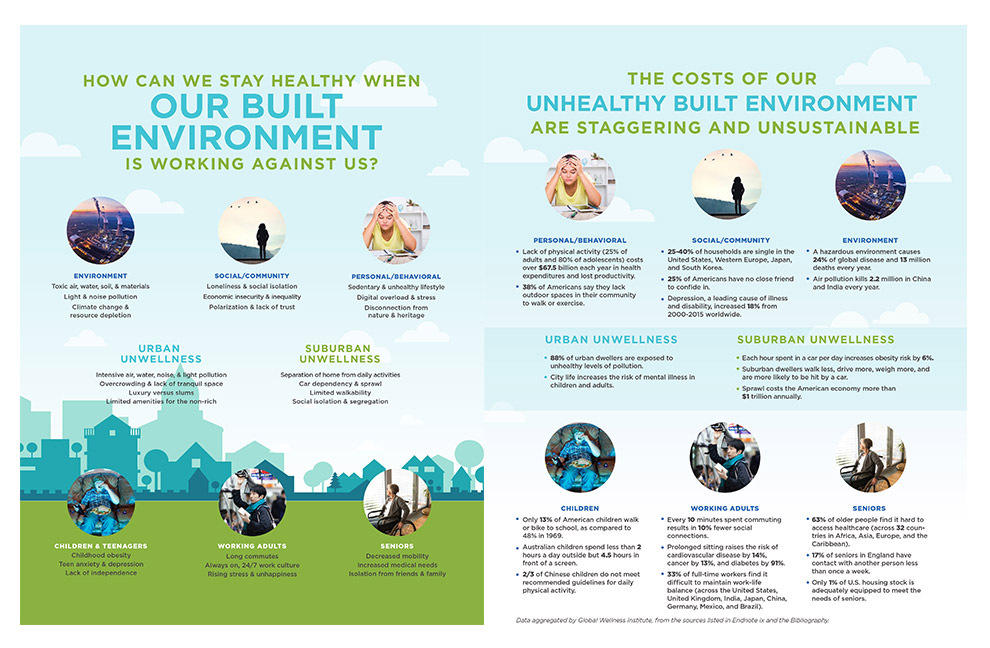
Residential real estate is being radically transformed by wellness.
Our homes and surrounding environment directly affect our daily behaviors and lifestyles, and together determine up to 90 percent of our health outcomes. Since our homes are typically our most important personal investment and expenditure, it is only logical that they should also be an investment in our health and wellbeing.
The way our homes, neighborhoods, and cities have been built in the last century is reinforcing lifestyles that make us stressed, alienated, unhappy, and sick.
Over the last hundred years science and technologies have brought great advances in engineering, sanitation, conveniences, entertainment and telecommunications into our homes. Yet, our modern living environment has also created new health risks: lack of physical activity, poor diet, stress, social isolation. Even as people live longer, more are living lonely, unhealthy and unhappy lives.
Gast Home represents a shift that puts people’s wellness at the center of the conception, design, creation and redevelopment of our homes. As we look to the future of wellness real estate, we can expect smarter use of technologies and innovations, new metrics to capture the Return on Wellness (ROW), and a deeper exploration of the relationships between physical and virtual communities and between our individual/personal wellness and community/planetary wellness.
- Optimizing Wellness: We must build homes that enhance health and wellbeing
- From passive to active wellness: our home should encourage proactive behaviors that drive wellness
- From hardware to software: Bricks and Mortar needs supporting programming that nurture healthy behaviors and social connections
- From “I” to “we”: Individual wellbeing is linked to the people around us
- Wellness homes are proactively designed to support the holistic health of the people that live there
- Wellness communities proactively pursue wellness across its many dimensions. They can be rooted in a purpose built physical space, or an online community
- Wellness lifestyles can be designed to optimize wellness in every aspect of one’s life
Holistically and intentionally designed wellness homes can have many positive impacts:
Minimizing environmental impacts on human health: reduce toxic substance exposure; improve sleep, reduce stress; and promote earth-friendly practices.
Supporting behavior change and healthier lifestyles: encourage movement, active lifestyle, mind-body health, and healthy eating; use nature to improve mental/psychological wellbeing.
Fostering a sense of place, community and belonging: smart design can encourage social encounters, increase community interactions, and build civic engagement.
Because a home designed for wellness has less to look at, you want everything you look at to be beautiful.


